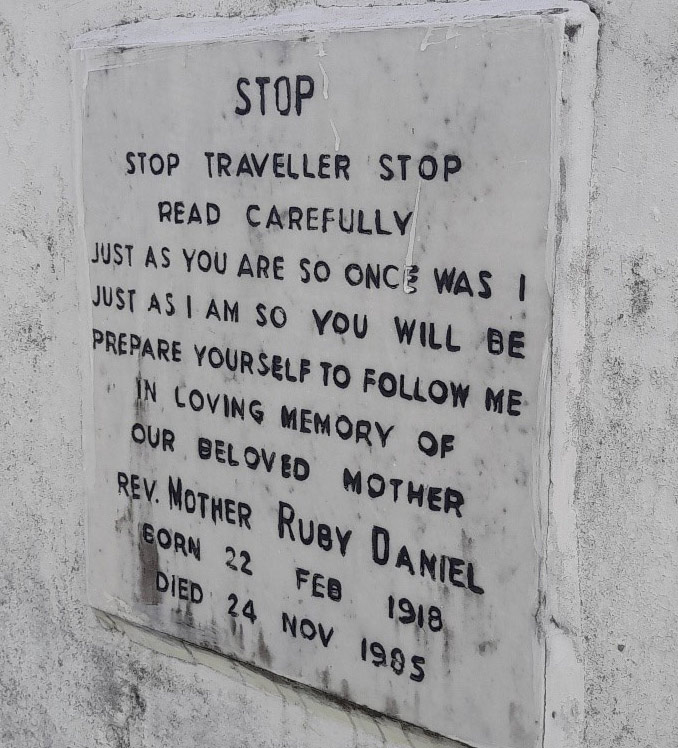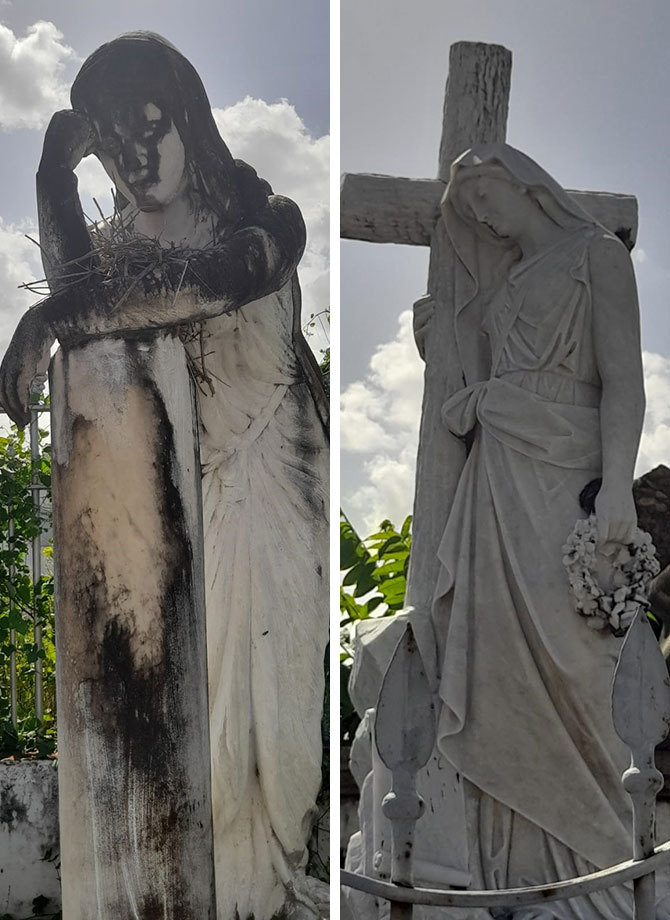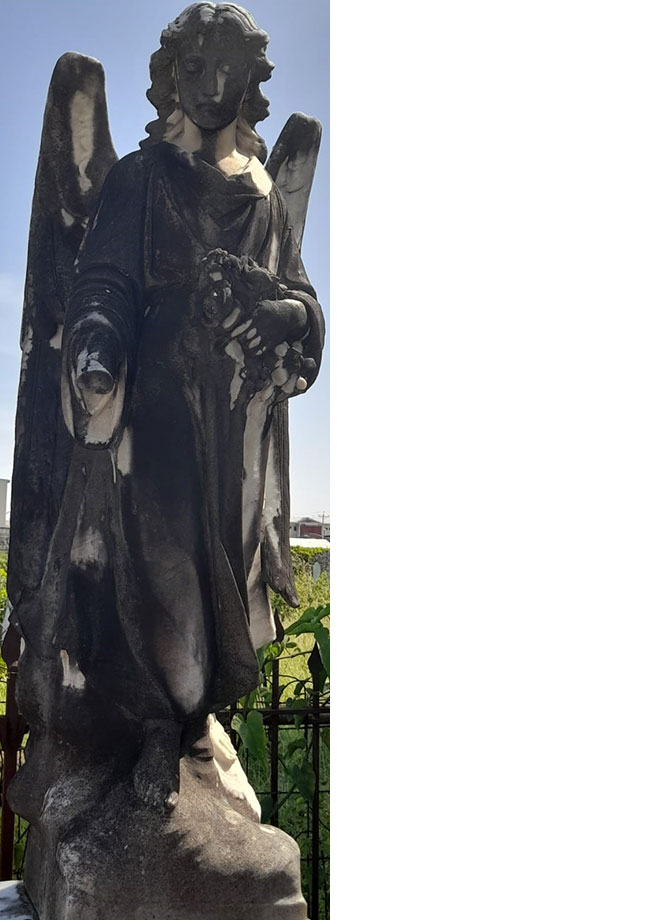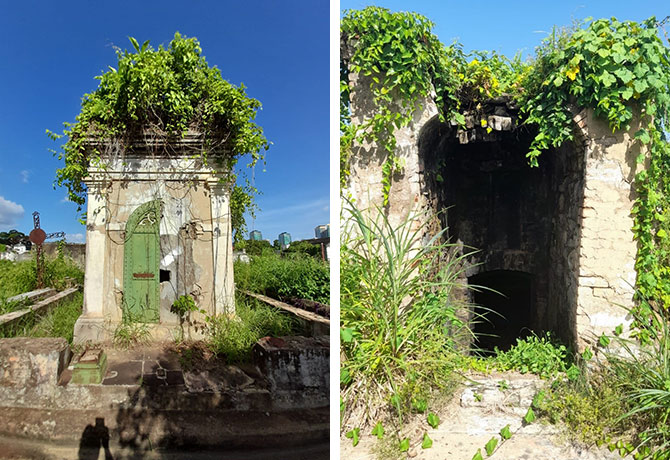“Cemeteries are interesting. They`re worth visiting and they`re worth studying. If we take the time to listen to what the stories might tell us, we have a lot to learn.” – Richard Veit
Walking through Lapeyrouse cemetery in the middle of the day with the hot sun beating on the back of your neck is not a small task, but the notable people, though deceased, you learn about and the marvelous art you are bound to run into when exploring the cemetery will make the trek worthwhile. This mysterious graveyard, with its large collection of idols and art can be considered a museum of sorts. Where else in Trinidad can you find a mausoleum so large it can serve as a small house, occupied by one of the most prominent businessmen in the country, William Gordon Gordon? Gordon came to Trinidad at 17 years of age in 1868, as a clerk to the Colonial Bank. The son of a Scottish squire, he learnt the ins and outs of the merchant community and business, associating himself with the French planter class. His company, Gordon Plantations owned 50 estates across the country and he possessed quite a formidable inventory of business associates, such as Leon Agostini, wealthy cocoa trader, with whom he founded the Trinidad and Tobago Chamber of Industry and Commerce in 1879.
Most people are unaware that they may be walking or driving along Colville Street, to go to the Avenue or head into the capital, and they are meters away from a mass grave which held the corpses of hundreds of people who fell victim to the cholera epidemic of the 1850s. In September of 1854, the first cholera deaths were recorded in Trinidad and by September 22nd deaths had risen to one hundred and forty. They increased to two hundred by month end. Eventually, the country was overrun with cholera as more than 10% of the total population died from the disease.
Where else can you view of the gravestone of the legendary Captain Arthur Andrew Cipriani? His involvement in World War I incited his political career when he recruited soldiers for the front lines. From there he was made Captain serving in the British West India Regiment in 1917. His exposure to war and the treatment of the West India Regiment soldiers who served on the front lines motivated him to fight for the rights of ex-soldiers and the disadvantaged in society. Upon his return from World War I in 1919, he was offered the presidency of the Trinidad Working men’s Association which he accepted. While in this post he advocated for the labourers through recognition of trade unions, reduction of working hours, overtime pay, workmen’s compensation, improved working environments, self-governance and legal reform.
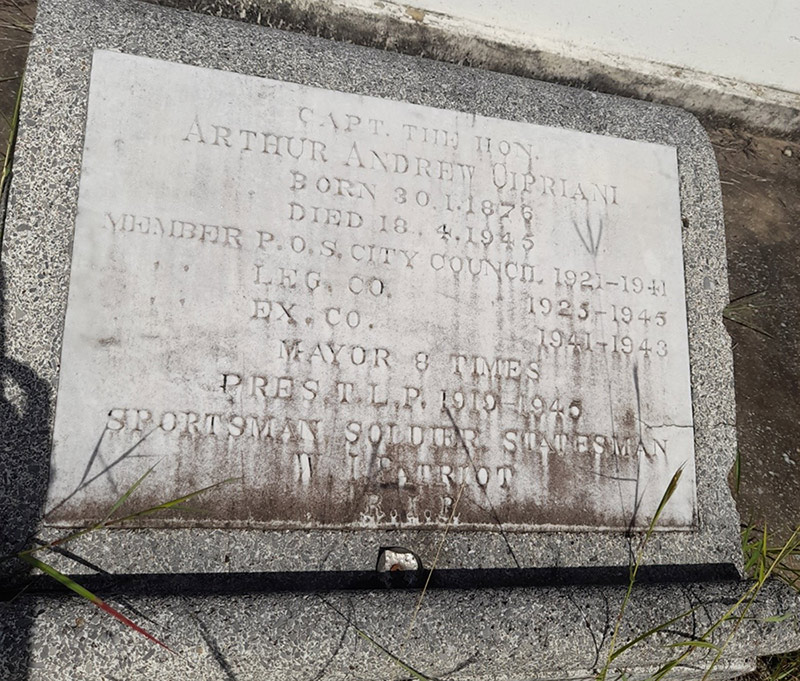
There are endless pages of our colourful past and history resident in this cemetery. Read the tombstones, you may find a curious inscription or two.
This gravestone reads:
“Stop traveller stop read carefully, Just as you are so once was I, Just as I am so you will be, Prepare yourself to follow me, In loving memory of, Our beloved mother, Rev. Mother Ruby Daniel, Born 22 Feb 1918, Died 24 Nov 1905”
An ominous read for some, a humbling wake up call for others. There are many interesting graves such as this one in the cemetery, but alongside some of these graves are statues of marble which are clear representations of a time long past in which marble art was used by wealthy families to watch over the graves of their fallen loved ones and the figures of saints or the Virgin Mary were the selected biblical characters for this.
White marble draped in black residue from years of weathering, dust, moss and smog which has left these statues in a state which can only be described as beautifully strange. Once portrayed as holy and pure, these figurines make one stop and stare when first seen. Do you think the Venezuelan sculptor Eloy Palacio, who sculpted many of these statues, with the intent of presenting holy depictions upon these graves, ever imagined his masterpieces would transform into these unnerving figures? Palacio was resident in Trinidad due to political exile from Venezuela during the 1870s and sculpted these statues using Carrara marble from Italy.
Though the history behind these statues requires further research, their paralyzing impact on visitors to the cemetery is a statement to the beautiful work of the artist which has crossed generations.


There are multiple tombs and graves which still require more investigation to find out who was buried there. What was the inspiration behind the tomb design? How did they die? Many have been violated by grave robbers, scrap iron thieves, vagabonds and the valuable materials buried with the deceased have long gone. This does not help in information gathering. The damage left by vandals has transformed these tombs and graves in Lapeyrouse into ominous resting places. One such tomb is the Mausoleum belonging to the Blanc Trujillo family. This is one of the most sinister looking graves in Lapeyrouse. The Blanc Trujillos arrived in Trinidad in the 1860s after fleeing their country of Venezuela due to political unrest. The mausoleum in which the family resides is an ornate gothic burial vault which was erected in the 1890s. The family was known in Port of Spain for a commission agency which did quite well in its time and also financed this grand burial vault. It is now a shadow of its former self due to poor upkeep, vandalism and damage from scrap iron dealers and grave robbers.
Even in the middle of the day, you may find yourself rushing past these foreboding graves to outrun an imaginary presence reaching for your back. Mystery is thick and ever present in the cemetery, lurking around every corner and path. It is repelling yet at the same time attractive due to the unknown pieces of history one can find by searching hard enough in the Lapeyrouse. Historians, researchers andenthusiasts of the dark and mysterious revel in the treasures found within this musuem of mortality.
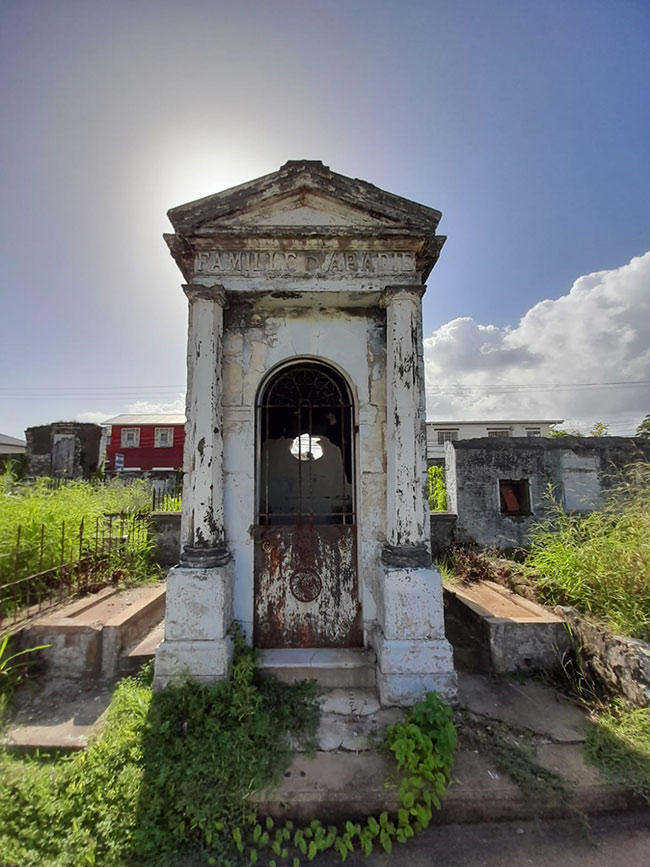 This cemetery is the final resting place of loved ones, notable figures of our past, babies and victims of cholera who were buried with no name. Generations of history, sadness, mourning, grief, pride, all clash within these burial grounds. Though the cemetery is a daunting place, it is one of the most valuable places in our country. It is important to remember those who have long gone. Those who have lived their lives, left their legacies and are now at peace. Walking through lapeyrouse cemetery ensures you come face to face with a certain reality, however with every tombstone that is glanced upon and discovered among the dust and bush, is a face of our history that is revitalised.
This cemetery is the final resting place of loved ones, notable figures of our past, babies and victims of cholera who were buried with no name. Generations of history, sadness, mourning, grief, pride, all clash within these burial grounds. Though the cemetery is a daunting place, it is one of the most valuable places in our country. It is important to remember those who have long gone. Those who have lived their lives, left their legacies and are now at peace. Walking through lapeyrouse cemetery ensures you come face to face with a certain reality, however with every tombstone that is glanced upon and discovered among the dust and bush, is a face of our history that is revitalised.
Written by
Maya Doyle
Research Officer
National Trust of Trinidad and Tobago

